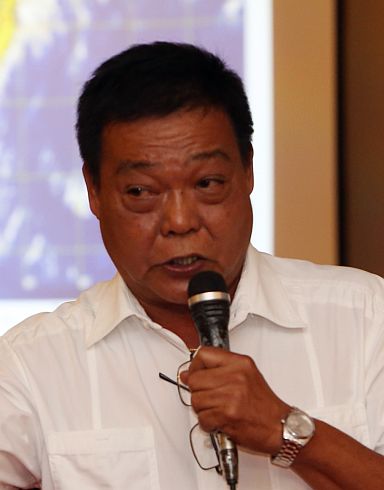
TABADA
Aircraft safety issues have forced the Philippine Atmospheric, Geophysical and Astronomical Services Administration (Pagasa) to suspend cloud-seeding operations effective May 3.
Oscar Tabada, Pagasa Visayas director, said the aircraft used for the cloud-seeding operations could not be detected by the Civil Aviation Authority of the Philippines radar, which undermines the aircraft safety.
“Gi-suspend kay duna’y problema ang eroplano. Ang CAAP, dili makakuha ang radar nila mao to gisuspenso. Di man ma-pick sa radar sa CAAP mao na kuyaw sa disgrasya,” he said.
Tabada said a transponder would have to be installed on the aircraft before it can resume its cloud-seeding operations.
A transponder, short-for transmitter-responder, is an electronic device that produces a response when it receives a radio-frequency interrogation.
Aircraft have transponders to assist in identifying them on air traffic control radar.
Transponder transmissions have also been used as a means of detecting aircraft at risk of colliding with each other. Based on their schedule, Tabada said they should be able to resume cloud-seeding operations in Cebu on May 18 until June 3, as the cloud-seeding team is set to conduct their operations in Negros next week.
Meanwhile, the Department of Agriculture (DA) has validated that 25,302 farmers from 36 local government units have been affected by the El Niño phenomenon.
Overall, the DA said crop damage has been validated at P140.4 million, excluding the Cebu Provincial Rapid Assessment Team’s (CPRAT) initial report of mango plantation damage in Compostela estimated at P151 million. According to the DA, the fourth district sustained the highest amount of rice damage at P47.3 million. The district includes the city of Bogo and the towns of Bantayan, Daanbantayan, Madridejos, Medellin, San Remigio, Santa Fe, Tabogon, and Tabuelan.
The third district sustained the highest livestock damage at P1.68 million. This includes the city of Toledo and the towns of Aloguinsan, Asturias, Balamban, Barili, Pinamungajan, and Tuburan. Cebu Provincial Disaster Risk Reduction and Management Office (PDRRMO) head Baltazar Tribunalo said the validated assessment will help them categorize and prioritize interventions.
“Nana’y mga areas nga na-identify na jud, nana’y mga requests at the same time, duna na pud ang pag-prioritize sa mga areas,” he said.
“Mao na karon atong i-review ang mga documents kay para unsa jud ang unahon at the same time pag-balanse pud kinsa’y labing tagaan basi sa figures nato dinhi,” he added.
He explained that the assistance that will be given to the affected communities of the El Niño has strategically dual functions. “Ako ning gibalik-balik nga atong interventions sa El Niño, strategically dual siya,” he said.
“Like mo-provide ta og jerry cans, mo-provide ta og mga tanke, at the same time it will also address sa concern nato kung daghan og tubig (if La Niña).
“Ug kadtong atong mga water impounding. Pag-mitigate sa kusog kaayo nga uwan, sa kusog kaayo nga baha, kung duna ka’y water impounding, ang impact mahinay-hinay gyud sa mga landslide-prone area or sa mga area nga pwede mag flashflood.”
However, no actual distribution of relief assistance has been made as of yet despite the ready supply of 7,200 sacks of rice worth P9 million.
Of the P34 million quick response fund (QRF) of the provincial government, Tribunalo said P24 million has been allocated to purchase relief assistance while the balance of P10 million will be used for future contingencies.